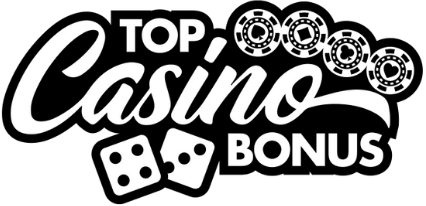Shuffle tracking in blackjack: an advanced technique
Blackjack’s elegance lies in its simplicity, 21 beats the dealer, and that’s that. Or so most players believe. But beneath the smooth surface of basic strategy beats a deeper, more complicated rhythm. Shuffle tracking is one of those hidden tempos, danced only by seasoned pros who’ve gone far beyond card counting. While most dismiss it as folklore or old blackjack hocus pocus, I’m here to tell you, it’s real, it’s powerful, and it ain’t for rookies.
Table of contents
What shuffle tracking actually means
Simplified? It’s the art of predicting the location of favorable cards, high cards, usually, after the shuffle. In standard card counting, you monitor the changing ratio of high to low cards and bet accordingly. Shuffle tracking pushes past that. You’re not just counting. You’re memorizing slugs, clusters of high cards, and tracking where they land once the cards are shuffled. It’s like watching a moving river and knowing exactly where the gold just sank to the bottom.
How it’s different from standard card counting
Most folks stop at card counting. Hell, most don’t even get that far correctly. They forget their counts halfway through a shoe or get too rattled by heat, fear of getting kicked out. But real grinders earn their keep with shuffle tracking. Whereas card counting adjusts your bet based on overall card composition, shuffle tracking zeroes in on exact locations. If counting is sonar, tracking is laser surgery.
Why shuffle tracking works
Casinos use continuous or manual shufflers. The manual shuffle routines, especially the lazy ones dealers do when they’re trying to move quickly, are exploitable. Many combine riffles and strips but don’t randomize perfectly. If you know the pattern, and believe me, they repeat more often than you’d expect, you can follow a rich slug through the shuffle into a new shoe.
Identifying exploitable shuffles
Not all shuffles are created equal. Some are practically unbreakable, random beyond redemption. But I’ve seen enough dealers over the years who cut corners. They’ll do a couple riffles and a strip, then slap it back into the shoe. If you’ve clocked that a particular dealer uses a weak 2-pass riffle and places the stack back exactly as dealt, you’re licking your chops. That’s your dance floor.
The right conditions for effective shuffle tracking
Now, let’s not sugarcoat it: opportunities are scarce. Most casinos have gotten wise, installing continuous shufflers or automating parts of the process. But old-school joints? Smaller floors like what you’ll find poking around the corners of Borgata Casino or certain tables at Casino Cruise? Goldmines, if you know what you’re looking for.
Tracking slugs in real-time
Say you’ve marked the last two decks of an 8-deck shoe as rich in high cards. After the shuffle, you watch where those cards land, let’s say they’re now near the start of the shoe. The moment the cut card passes, and those hands begin, you pounce with your biggest bets. That’s not guesswork. That’s targeted deployment based on concrete observation.
Common misconceptions that get players burned
The most painful mistake? Thinking shuffle tracking is something you can casually try out. You can’t. It requires eagle-eyed observation, precise memory across dozens of hands, and the ability to reverse map card clusters through incomplete shuffles, and do all that while holding a conversation and sipping on a gin and tonic without looking obvious. I’ve seen younger players burn out after two shoes.
Misunderstanding the mechanics of clumping
Clumping is real, but you’ve got to grasp why. High cards tend to stick together not by magic, but by dealer mechanics. When a sloppy dealer riffles decks with uneven pressure, they don’t break up clumps. So, a rich segment from the discard tray ends up mostly intact. You misread that, and suddenly you’re max-betting into a desert of 4s and 5s. Been there, saw it happen to an overconfident kid from Brooklyn in ‘92.
How to train for shuffle tracking
Like mastering any craft, there’s no quick route to competence. You start by observing actual shuffle sequences, that means sweating games without betting, using nothing but your eyes and your notes. Watch how slugs move. Time the riffles. Note how deep into the shoe the rich sections usually land. This is slow work, measured in months, not sessions.
Using simulated drills and homemade tools
Back in the day, we’d build rigged tables to mimic casino shuffles. Practice with eight decks, track preset slugs, then test ourselves by calling their final location. Today, you’ve got apps and sim tools, though, frankly, most don’t replicate the heat of the pit. Real training still rests on the floor. And if your end goal is truly to go beyond basic, consider learning about other advantage play techniques that complement shuffle tracking.
Choosing the right casino to deploy shuffle tracking
This technique ain’t universal, you can’t use it anywhere. The key’s selecting a venue with manual shuffling, longer shoes, and low table rotation. I’ve found places like BGO Casino sometimes offer live dealer tables with predictable shuffle patterns. Oddly, even larger platforms like Betway have sessions off-peak where conditions line up just right. You’ve got to scout and strike when the alignment is perfect.
Balancing heat and discretion
Don’t be the fool betting table max one hand and minimum the next. Learn to layer your play. Keep a mid-range bet baseline. Use side counts to justify medium raises before the real slug rolls in. Think of your game like jazz, you hit the loud notes only when the whole room’s tuned in.
Final thoughts: shuffle tracking as refined craft
Shuffle tracking’s not for Instagram showboaters or weekend warriors. It’s the blackjack equivalent of carpentry by hand, slow, deliberate, unwavering. It takes muscle memory, discipline, and a sixth sense honed by repetition. And just like the old-timers could tell the type of wood just by the grain under their fingertips, a skilled tracker can feel the next ace before it hits the felt.
If you’re serious, don’t chase money, chase patterns. Follow discipline over glory. And above all, remember: every edge, no matter how small, belongs only to those who track it with purpose, not luck.





0 Comments